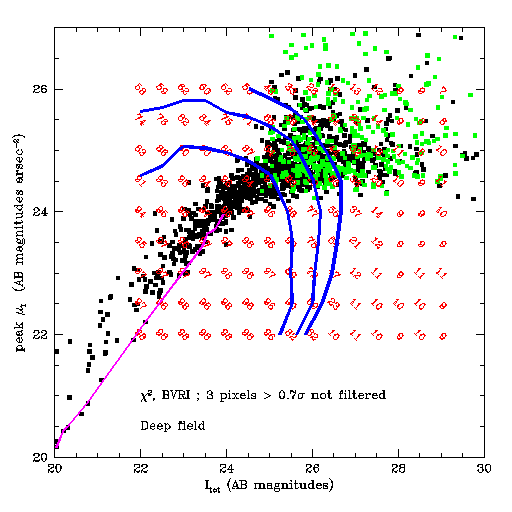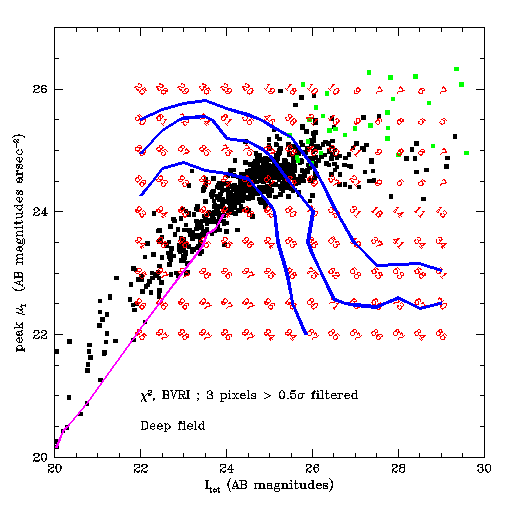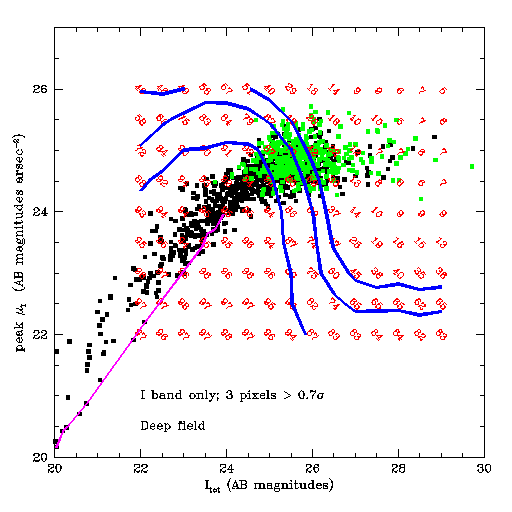


| SExtractor has the option to convolve images with filter before detection. The question is, should one use it. The answer (very preliminary, don't quote us but if it's true you heard it here first) appears to be yes. |
| The whole procedure is the same as before (go here
for details). The difference this time is turn the filter (currently a
gaussian with 0.7" width)
on or off. |
| In the following graphs, all the symbols and colours have the same meaning as here |
| The detection criteria for the graph to the right
are: 3 contiguous pixels in the combined BVRI chi-squared unfiltered
image must be greater than 0.7. There are a large number of false detections.
|
 |
| The detection criteria for the graph to the right are: 3 contiguous pixels in the combined BVRI chi-squared filtered image must be greater than 0.5. There fewer false detections, but the detection limits are about the same. |  |
| For comparison, here are the results using only the I band image for detection. |  |
| Basically, filtering and chi-squared really only improve the rejection of false detections. The detection limits remain roughly the same. |
Conclusions:
|